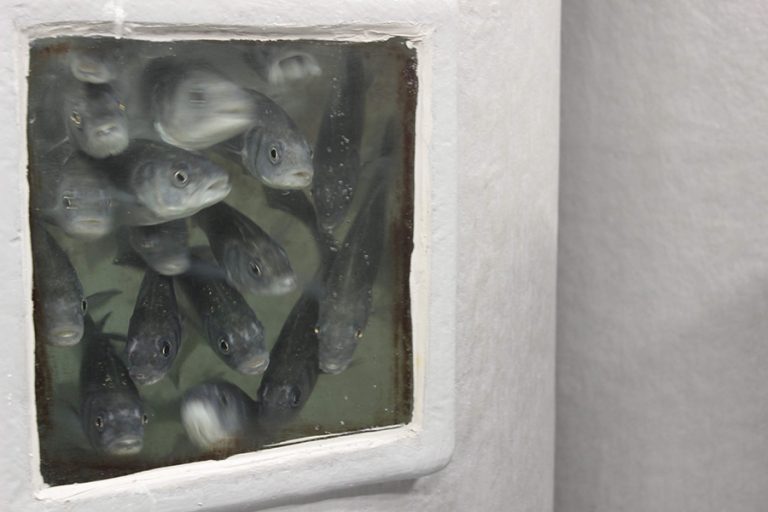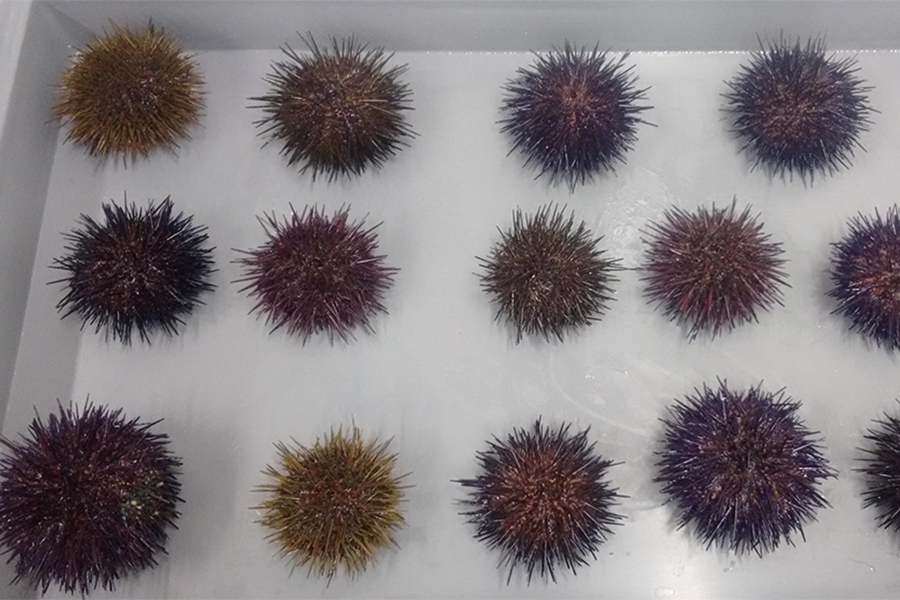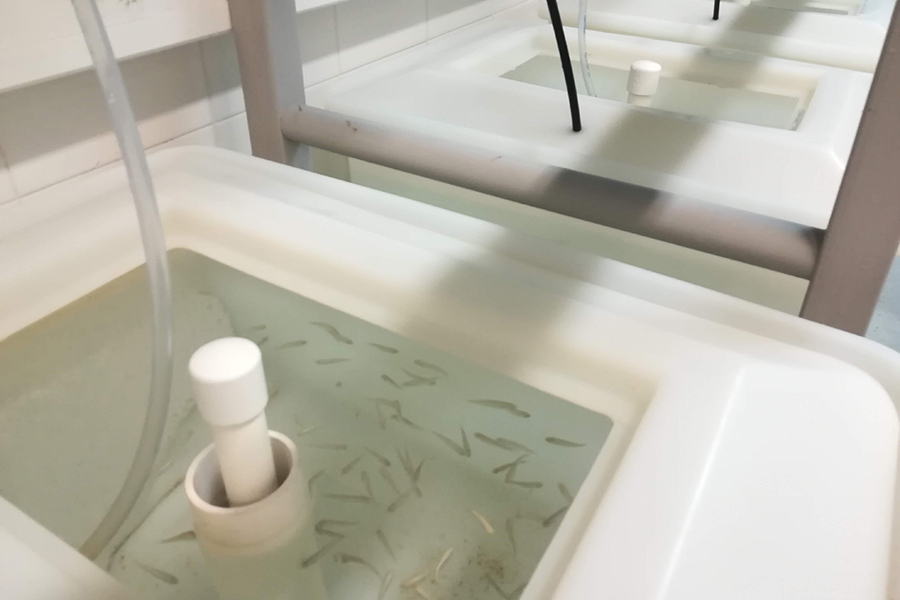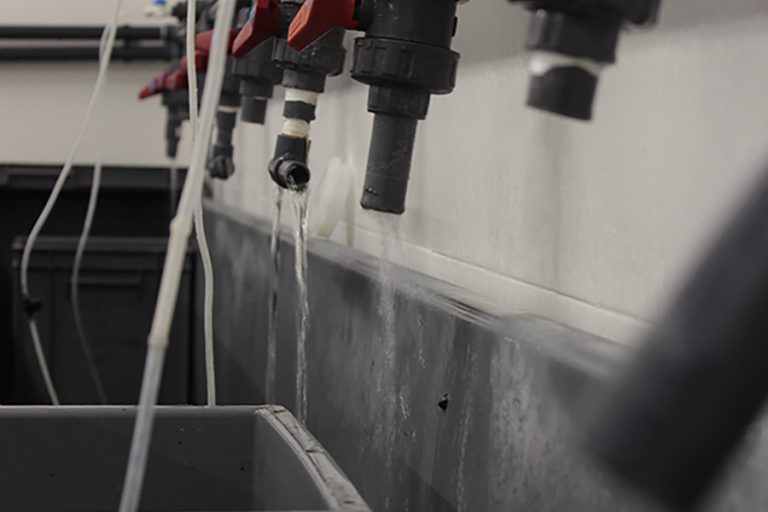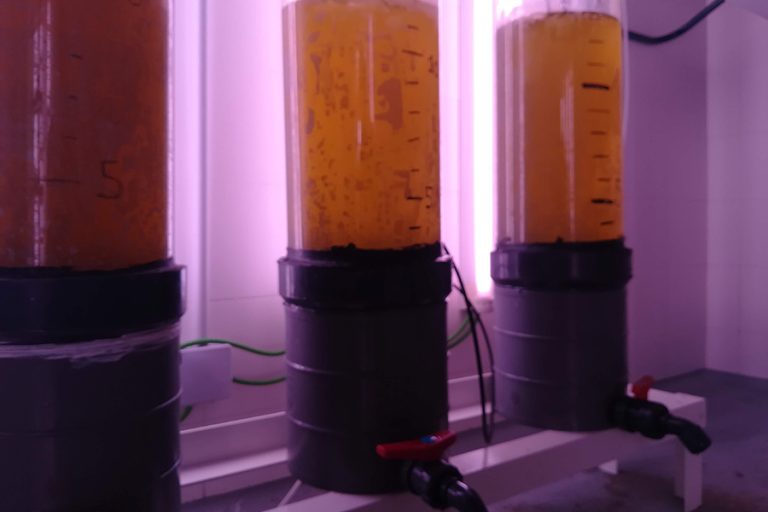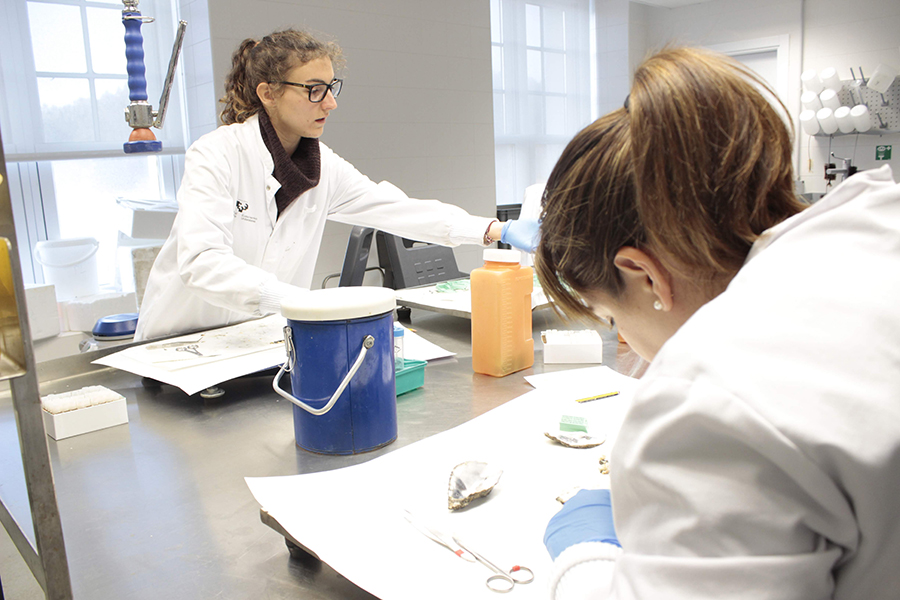Experimental Aquaria
Experimental aquaria are essential facilities at PiE-UPV/EHU where a wide range of experiment can be performed with the highest quality required. A plethora of experiments with marine algae, invertebrates and vertebrates can be carried out with highest quality standards.
PiE-UPV/EHU, as partner of EMBRC fulfills the compromise with the ethics and animal healthcare in experimentation regulations.
The building due to its location in the beach has a great opportunity for Sea water supply. Naturally filtered good quality water is obtained from two wells in the Bay of Plentzia.
General characteristics
- Modular facilities. It allows a perfect design and the development of any experiment and especially useful in toxicological experimentation.
- High quality seawater continuous supply (up to 300000 L/day) and air supply.
- Metal free
- Photoperiod and temperature are independently regulated
- Equipped with sea water quality and control:
- Marine water temperature controler- titanium plate interchanger. It allows the regulation of temperature in flow-through systems (12 m3/h; 14-22 ºC).
- Data logger for continuous recording of the water quality (pH, conductivity, salinity, oxygen, turbidity, chlorophyll levels)
- Equipped with its own depuration plant organized in three depurations lines (organic material, hydrocarbons, metals). It allows experimenting with a huge range of contaminants without harming the local depuration plant.
- In addition, specific filtration units could be installed for specific experiments if it is required.
Examples of type of experiments conducted in PiE-UPV/EHU
- Toxicological and growth experiments have been performed with marine mollucs such as periwinkles, oysters and mussels.
- Toxicological experiments have been performed with sole, Solea sp., exposed to model contaminants in sediments and waterborne.
- Sea bass was exposed to mixtures of emergent contaminants in open flow system using passive dosers in order to investigate changes at chemical, metabolomical and bio/histochemical levels in the sea bass.
- Experiments carried out to investigate changes in the behavior patterns of sea bass fed Hg contaminated food, using under-water camera records to analyse the entropy of fish movement.
- Sea urchin is used as model experimental species for biomedical (e.g., membrane lipids of sea urchin embryos as models for cancer research), as well as for toxicological assays.
Interested in using our experimental facilities?
Please contact to the coordinator of the experimental aquaria unit:
Dr. Urtzi Izagirre
Tlf: +34 946018449 | @mail: urtzi.izagirre@ehu.eus

